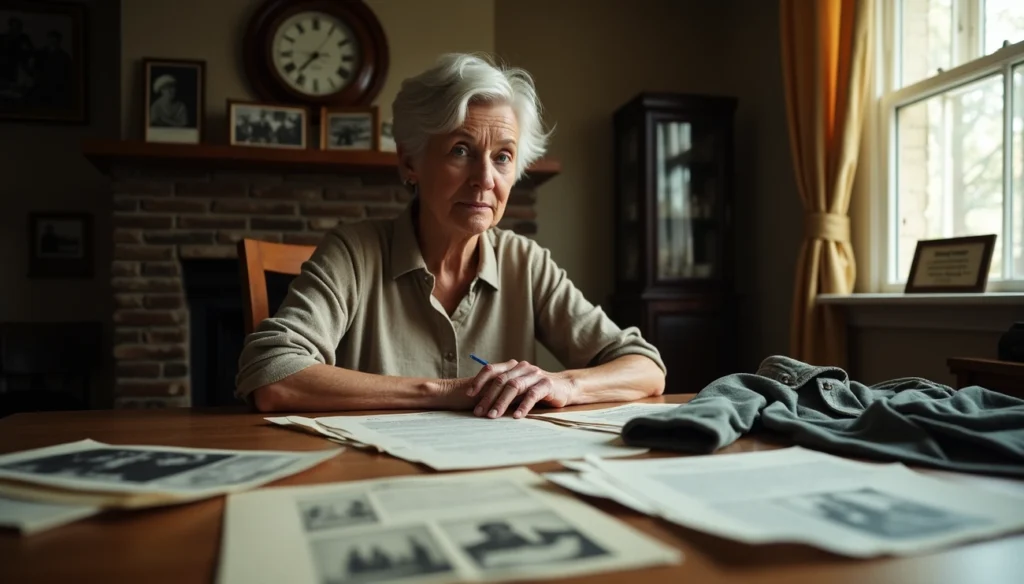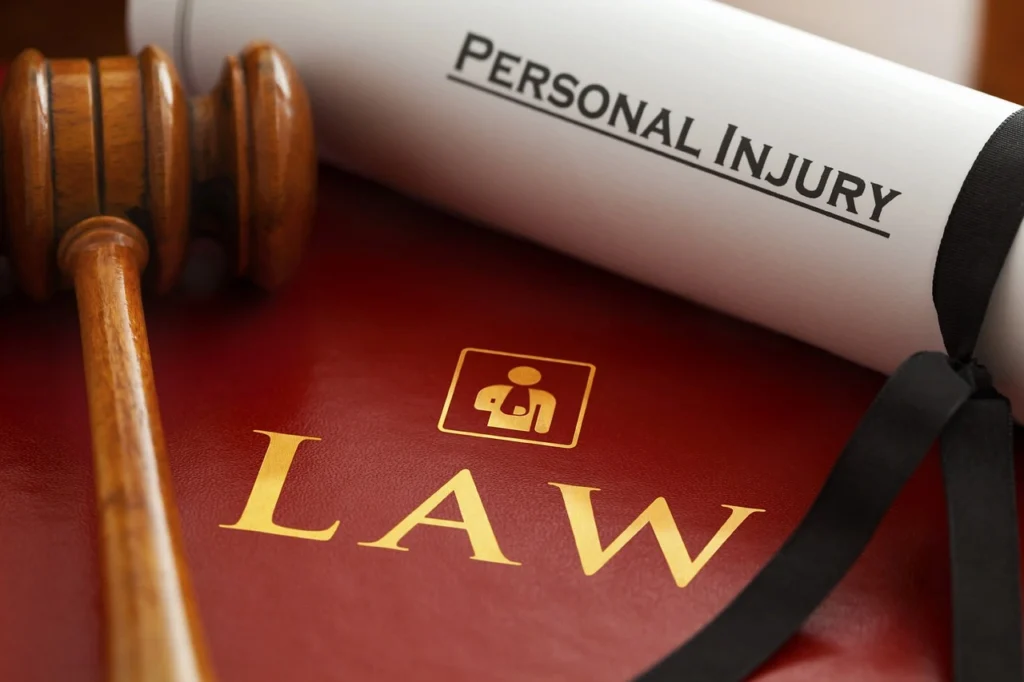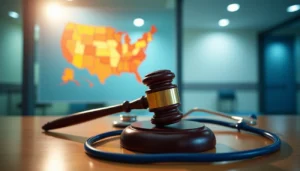Mesothelioma Legal Rights: What Victims Need to Know in 2025
21 min read
Many people fail to recognize their original exposure in mesothelioma legal cases. The Journal of Lung Health and Diseases reports that secondary asbestos exposure causes 30% of mesothelioma cases, and women face a higher risk. This dangerous carcinogen poses serious health risks and leads to devastating diseases like mesothelioma, lung cancer, asbestosis, pleural plaques, and pleural effusion.
Getting mesothelioma legal help can feel overwhelming when you’re going through such a difficult time. A mesothelioma legal claim helps cover mounting medical expenses, loss of income, and compensation for pain and suffering. Companies that used asbestos have trust funds to compensate future victims, but these claims have specific filing deadlines. This piece provides detailed mesothelioma legal advice to help you understand your rights and options in 2025.
Understanding Asbestos Exposure and Its Legal Impact
Asbestos exposure continues to be a serious health concern even with rules limiting its use. This natural mineral was once valued for how well it resisted heat and lasted long. Now it has left behind a tragic story of sick people and legal troubles.
What is asbestos and how exposure happens
Asbestos includes six natural silicate minerals you can find in rock and soil41. These fiber-like minerals became popular in business because they resist heat, fire, chemicals, and conduct electricity poorly42. People used asbestos everywhere in building materials, car parts, fabrics, and insulation during the 1900s, before they knew how dangerous it was.
You get exposed to asbestos when materials containing it break apart and release tiny fibers into the air41. These fibers are too small to see and can float in still air for 48 to 72 hours43. People usually come across asbestos in these ways:
- Occupational exposure: Construction workers, miners, shipbuilders, factory workers, and demolition crews face the biggest risks44. Veterans who worked certain military jobs might have faced heavy exposure45.
- Secondary exposure: Family members can breathe in asbestos fibers from worker’s clothes, skin, or hair42. This type of exposure has hit women harder, especially those who washed contaminated work clothes46.
- Environmental exposure: Living near natural asbestos deposits or mining operations puts people at risk of breathing airborne fibers46. Natural disasters that damage buildings can also release old asbestos into the air44.
You can be exposed many years after installation, especially during home updates, repairs, or tear-downs of older buildings with asbestos materials41. The EPA has found that disturbing and handling old asbestos puts human health at too much risk47.
Diseases linked to asbestos exposure
Asbestos exposure leads to several deadly conditions. These diseases are sneaky because symptoms show up 20 to 60 years after your original exposure43. This long wait makes it hard to diagnose and handle legal cases.
The biggest health problems from asbestos include:
Cancer-related conditions: Major health groups classify all types of asbestos as substances that cause cancer42. Exposure leads to mesothelioma (a rare cancer in the lining of lungs, belly, or heart), lung cancer, and cancers in the voice box and ovaries44. WHO and ILO estimate that workplace asbestos exposure kills more than 200,000 people worldwide each year, which makes up over 70% of work-related cancer deaths44.
Non-cancerous breathing problems: These include asbestosis (scarred lung tissue), pleural plaques (scars on lung lining), thickened pleura, and fluid buildup around lungs. These conditions can make life very hard48. Though not cancerous, they can kill if left untreated and might mean you’re more likely to get cancer later49.
No amount of asbestos exposure is safe43. Your risk goes up the more you’re exposed, but even brief contact has caused mesothelioma in some people50.
Why legal action is often necessary
Asbestos victims often take legal action because they have no choice. Medical bills for asbestos-related diseases can run into hundreds of thousands of dollars. Victims lose wages, can’t earn as much anymore, and deal with lots of pain and suffering.
Companies that exposed people to asbestos knew about the dangers but didn’t warn anyone51. Courts keep finding asbestos makers responsible because they knew asbestos could kill yet didn’t protect people51. Legal action helps victims get money they need and makes guilty companies pay for what they did.
Asbestos cases need lawyers who know what they’re doing52. Proving exposure is tough because:
- Symptoms take decades to show up after exposure
- You might have been exposed in many places over your life
- Some responsible companies don’t exist anymore or went bankrupt
- Medical proof linking specific exposure to illness gets complicated
Mesothelioma claims need lots of detective work to track down exposure history, find who’s responsible, and get money from the right places—whether through lawsuits, death claims, asbestos trust funds, or VA benefits for veterans52.
How to Prove Asbestos Exposure
Mesothelioma legal claims face unique challenges when proving asbestos exposure. Symptoms usually show up 10-40 years after the first contact with asbestos. This time gap makes it hard to pinpoint exactly when and where the exposure happened. Yet proving this connection remains vital to win your case.
Using investigators to trace exposure
Expert investigators make a huge difference in building strong mesothelioma cases. These specialists dig deep into your asbestos exposure history. Your memories create a starting point, but investigators know how to uncover details you might have forgotten or didn’t think mattered.
The investigation starts with a detailed talk about your work history, places you’ve lived, and other possible exposure sources. These conversations often reveal surprising sources of exposure, like talc products you wouldn’t suspect. Investigators then use company records, databases, and specialized tools to track down specific materials containing asbestos that crossed your path.
Law firms with decades of experience handling asbestos cases give you an edge. They’ve built extensive archives about major employers and products. This knowledge strengthens every new case they take on.
Identifying asbestos-containing products
Finding specific products that contained asbestos plays a key role in proving exposure. Many people worked with dangerous materials without knowing the risks. Lawyers now have special tools to help identify these products years later.
Lawyers show clients a detailed catalog of items containing asbestos during investigation meetings. This helps people recognize specific products they used, which connects their illness to particular manufacturers. The list includes more than 3,600 known items with asbestos, such as:
- Construction materials (insulation, drywall, joint compounds)
- Automotive parts (brake linings, gaskets)
- Industrial equipment (boilers, turbines, valves)
- Household items (floor tiles, ceiling panels)
Linking these products to your case matters because most mesothelioma claims involve about 70 different companies.
Job site records and employment history
Your employment records prove where and when you worked around asbestos. Lawyers look for several types of documents to build your case.
Medical records showing your diagnosis form the foundation. Employment papers tie you to specific locations where exposure happened. Everything from pay stubs to tax forms helps establish your presence at particular sites. Union cards and pension statements also paint a clear picture.
Veterans seeking benefits need their service records to show where they served and what jobs they did. Building permits, asbestos removal records, and architectural plans from work sites provide extra proof.
Witness statements from co-workers
Stories from people who worked with you strengthen your mesothelioma claim. Their accounts fill important gaps, especially when paperwork is missing or companies have changed hands.
Former colleagues can verify:
- You worked at specific sites
- The types of asbestos materials used
- Work conditions and safety measures
- Times they saw asbestos exposure happen
These statements help meet the strict requirements for proving mesothelioma cases. Co-workers who shared your exposure experiences help create a full picture of working conditions. This becomes extra valuable when time has erased other evidence.
A skilled attorney brings all these pieces together. They combine investigation results, product details, work records, and witness accounts to build a solid case. This shows your exposure history and links it directly to your illness.
Secondary Asbestos Exposure and Legal Claims
Secondary asbestos exposure affects people who never directly handled asbestos materials, unlike workplace contact. These indirect exposures make up much of mesothelioma cases and create unique legal challenges for victims who want justice.
What is secondary exposure?
People get secondary asbestos exposure through indirect contact with an exposed worker or contaminated items. This type of exposure, also known as “take-home,” “domestic,” or “secondhand” exposure, mostly affects family members. Workers unknowingly brought microscopic asbestos fibers home on their clothes, hair, skin, or tools.
A Journal of Lung Health and Diseases study shows 30% of mesothelioma cases in the United States come from secondary exposure10. The American Journal of Industrial Medicine reports that women face higher risks from household asbestos exposures10. This gender gap exists because men dominated asbestos-related jobs throughout the 20th century1.
Several common ways lead to secondary exposure:
- Laundering contaminated clothing – Family members risked exposure by washing work clothes covered in asbestos dust
- Physical contact – Children got exposed by hugging parents in contaminated work clothes or sitting on their laps
- Shared living spaces – Asbestos fibers built up on furniture, carpets, and in ventilation systems
- Shared vehicles – Fibers spread to car interiors and affected others who used the vehicle
Secondary exposure has lower asbestos concentrations than direct workplace contact. However, no safe level of asbestos exposure exists3. These indirect exposures cause similar health problems, including mesothelioma, lung cancer, asbestosis, and other asbestos-related diseases1.
How lawyers prove secondary exposure
Lawyers need specialized strategies to prove secondary exposure claims. Full documentation forms the foundations of any successful mesothelioma legal claim with secondary exposure. Attorneys collect:
The directly exposed worker’s employment records must show job titles, workplace details, and employment duration11. These records prove when and where the original exposure happened. Medical records that link health conditions to asbestos exposure provide vital evidence connecting illness to secondary contact11.
Dr. Marcelo DaSilva, a thoracic surgeon, highlights the importance of witness testimony: “I can think of at least three or four patients in which I’ve operated on” who experienced significant secondary asbestos exposure from family members10.
Secondary exposure cases present special challenges. The exposure location seems obvious in direct workplace cases. However, secondary exposure needs proof connecting a worker’s employment, their asbestos contact, and the subsequent exposure. A decades-long waiting period makes things harder—symptoms usually appear 10-50 years after the original exposure3.
State laws about secondary exposure liability differ by a lot. California and Washington courts generally accept employer responsibility for secondary exposure. However, New Jersey and North Dakota have rejected some secondary exposure claims completely10. Getting advice from attorneys who know these cases well becomes vital.
Ground examples of secondary exposure cases
American courts now recognize secondary exposure claims more often. This recognition has led to substantial compensation for victims. These cases show how the legal system now understands asbestos liability beyond direct workplace contact.
Henry Pete’s family got a USD 10.30 million award in 2023. He developed mesothelioma from childhood exposure when his father came home covered in asbestos dust10. Craig and Deanne Warren received USD 17.20 million in 2022 after Deanne got mesothelioma from secondary exposure through her husband’s work with asbestos products10.
English professor John Panza Jr.’s case stands out. He received USD 27.50 million in 2013 after developing mesothelioma at age 40. His exposure came from childhood contact with asbestos dust on his father’s work clothes from the Eaton Airflex brake company12. The jury split liability between Kelsey-Hayes (60%) and Eaton Airflex (40%), showing how courts handle these complex cases12.
Women who washed contaminated work clothes have won many claims. Phyllis Granville got USD 1.10 million in 2013. She developed mesothelioma from washing her tile installer husband’s work clothes13. Barbara Bobo’s family received USD 3.50 million after she died from mesothelioma. She got sick from laundering her husband’s asbestos-contaminated clothing from his nuclear plant job13.
The legal world keeps changing for secondary exposure cases. The California Supreme Court set a precedent in 2016 that makes companies liable for secondary exposure after two landmark lawsuits10. This decision strengthens future mesothelioma legal claims for victims of indirect exposure.
Types of Mesothelioma Legal Claims

Image Source: https://pixabay.com/
People diagnosed with asbestos-related diseases have several legal paths to get compensation. The right to understand these options is vital to access financial resources needed for medical treatment and family support.
Personal injury lawsuits
Living mesothelioma patients often turn to personal injury lawsuits as their main legal option. These claims target companies that made, distributed, or used products containing asbestos that caused the illness. The patient must be alive at the time of filing and show that specific asbestos products led to their diagnosis4.
These lawsuits typically provide compensation for:
- Medical expenses and treatment costs
- Lost income and reduced earning capacity
- Pain and suffering damages
- Loss of consortium (how it affects spouse/family relationships)
Most mesothelioma personal injury claims end in settlements ranging from $1 million to $1.4 million2. Cases that go to trial can result in much higher jury awards, sometimes over $20 million7. The process starts with finding a specialized attorney who looks into exposure sources and identifies responsible parties14.
Wrongful death claims
Wrongful death lawsuits work differently from personal injury claims – they’re filed after someone has died from mesothelioma. The estate’s representative, usually a spouse, child, or court-appointed person, files the claim for the deceased and eligible family members7.
The representative needs to prove three things: the victim died from an asbestos-related disease, the defendant wrongfully exposed them to asbestos, and the family faced financial or emotional losses15. These claims usually cover funeral costs, medical expenses, lost financial support, and compensation for pain and suffering7.
Settlements for wrongful death claims typically reach $1 million to $1.4 million, though jury verdicts often award much more2. To name just one example, a South Carolina jury awarded $32 million in 2021 to Kathy Weist’s estate after she died from secondary asbestos exposure7.
Asbestos trust fund claims
Many asbestos companies went bankrupt from overwhelming litigation. Courts made them set up trust funds to pay current and future victims6. Today, more than 60 active asbestos trust funds hold billions of dollars for claimants16.
Trust fund claims work differently than lawsuits – no court case is needed. Most patients qualify for multiple trust claims since several companies might share responsibility for their exposure6. A single trust pays about $41,000 on average, but patients often receive money from 20 or more trusts, which can add up to hundreds of thousands of dollars6.
VA benefits for veterans
Veterans make up much of the mesothelioma patient population because asbestos was common in all military branches. Veterans whose condition links to their service can get tax-free monthly disability payments through the Department of Veterans Affairs8.
Veterans need to meet two key requirements: they must have a diagnosed condition caused by asbestos exposure during their military service8. The VA recently increased its rates, and as of December 2023, disability benefits for mesothelioma start at $3,877 monthly17.
The VA rates mesothelioma as 100% disabling, which means veterans get the maximum monthly benefit no matter their income17. Beyond money, approved claims give veterans free cancer treatment through the VA healthcare system. They can access specialized mesothelioma treatment centers in Boston, Los Angeles, Miami, and Houston17.
Key Documents Needed for a Mesothelioma Legal Claim
The success of any mesothelioma legal claim depends on well-documented supporting evidence. Your legal team needs detailed evidence and pays close attention to every aspect. A strong paper trail becomes even more significant because symptoms often appear decades after exposure to asbestos.
Medical records and diagnosis reports
Medical documentation is the life-blood of every mesothelioma legal claim. A confirmed diagnosis must come first since exposure to asbestos alone won’t qualify you to file a lawsuit18. You should collect:
- Complete medical history, both recent and older records
- Detailed diagnosis reports confirming mesothelioma
- Results from diagnostic tests such as MRIs, PET scans, CT scans, and X-rays
- Biopsy results identifying the specific cell type (epithelioid, sarcomatoid, or biphasic)9
These records show how serious your illness is and document treatment costs to support your compensation claim5. Detailed medical documentation validates the connection between your disease and asbestos exposure – a basic requirement for any mesothelioma legal claim.
Employment and tax records
Your employment history creates a vital timeline of where exposure might have happened. Old employment records become extremely valuable when exposure occurred decades ago. Companies usually keep employment records that are a great way to get evidence for your case9.
Notwithstanding that company records might be unavailable, other documents can validate your employment history:
- Tax returns showing income from specific employers
- Employment contracts showing your work at particular locations
- Social Security Administration records listing your employers
Veterans seeking mesothelioma legal help through VA claims need their military service records. These documents show specific job duties and locations with potential asbestos exposure19. The records must prove where you served and what occupational specialties you held8.
Doctor’s statement linking exposure to illness
A doctor’s statement that connects your asbestos exposure to your mesothelioma diagnosis provides significant evidence. This document, known as a “medical nexus letter,” is the life-blood of evidence in mesothelioma legal claims20.
This statement needs:
- Confirmation of your mesothelioma diagnosis
- A clear explanation of how asbestos exposure caused your condition
- Documentation of physical examinations during diagnosis
- Expert medical opinion connecting your exposure type to your illness
Veterans pursuing VA benefits need this documentation even more. The VA needs “a doctor’s statement that there’s a connection between your contact with asbestos during military service and the health condition”8. Getting this significant documentation should be your priority.
Pay stubs and HR documents
Pay stubs and human resources documents give extra proof of your employment history. These materials help prove:
- Exact dates of employment at specific companies
- Job titles and departments where you worked
- Specific locations where exposure likely occurred
These documents provide solid evidence of your presence at workplaces with asbestos exposure20. Your coworkers’ testimony can back up these records by confirming your employment, job duties, and the presence of asbestos products21.
Survivors pursuing wrongful death claims must provide the death certificate along with other documentation5. Families need to gather the deceased’s employment records, exposure history, and medical documentation.
Experienced attorneys can help you get these essential documents while building your mesothelioma legal claim. You might already have some helpful documentation, but specialized mesothelioma legal help can secure complex evidence to make your case stronger20.
Challenges in Proving Asbestos Exposure
Building a successful mesothelioma legal claim comes with several most important hurdles. These challenges can make the process more complex even with experienced legal help to link asbestos exposure to your diagnosis.
Long latency period of mesothelioma
Mesothelioma symptoms show up 20 to 50 years after the original asbestos exposure22. This long gap creates major obstacles to establish your case. The symptoms rarely surface until decades after contact with asbestos materials. You might find it extremely hard to pinpoint the exact time and place of exposure23. The responsible companies might have shut down by the time of diagnosis. Records could be gone, and witnesses might have passed away. Your memory of events from decades ago naturally fades, which adds another layer of complexity to your legal claim24.
Multiple potential sources of exposure
Asbestos was everywhere across industries and products throughout history23. Many patients encounter asbestos several times during their lives, which creates significant challenges20. The biggest problem lies in determining which specific exposure caused your illness – a vital factor to gather legal information and evidence. Some people face workplace exposure among environmental or secondary exposure. This creates a complex web of potential causes23. Defendants often use this complexity to their advantage. They suggest other sources are responsible to reduce their liability25.
Limitations of current testing methods
No single reliable test exists to detect asbestos exposure20. X-rays serve as the most common method but can’t detect asbestos fibers directly. They only show early signs of related diseases20. TEM and SEM microscopic examination can identify smaller fibers and fiber types. However, these methods lack counting accuracy26. Doctors can find asbestos fibers through surgical lung tissue sampling, but the procedure remains invasive and uncomfortable20. Most people naturally have low levels of asbestos fibers in their bodies. This makes it hard to prove abnormal exposure20. These testing limitations make it vital to get legal advice from experienced attorneys.
How a Mesothelioma Lawyer Can Help
Mesothelioma lawyers deliver specialized assistance way beyond the reach and influence of standard legal representation. Their expertise can dramatically impact your case’s outcome and let you focus on your health.
Gathering and organizing evidence
Mesothelioma legal teams build strong cases through detailed investigations. They help pinpoint the time, location and method of your asbestos exposure27. Many law firms have extensive databases of asbestos products, manufacturers, and exposure sites that add weight to your claim28. These specialized resources help attorneys track exposure history even decades later. Their service includes collecting vital documents like medical records that confirm your diagnosis, employment history details, and statements from former coworkers29.
Filing claims and lawsuits
Your attorney files mesothelioma legal claims with appropriate courts and asbestos trust funds after gathering evidence. We filed all paperwork within strict state-specific deadlines30. Experienced firms submit claims to multiple sources at once—including personal injury lawsuits, wrongful death claims, asbestos trust funds, and VA benefits when applicable29. Legal teams manage every administrative detail from document preparation to court communications31.
Negotiating settlements or going to trial
Settlements resolve 99% of mesothelioma cases without clients needing to appear in court27. Mesothelioma settlements average between $1 million and $1.4 million27, while trial verdicts typically reach $5 million to $11.4 million27. Top attorneys prepare each case for trial even during settlement talks27. Clients often receive compensation within 90 days after starting their claim27.
Providing mesothelioma legal advice and support
Mesothelioma lawyers act as advisors and promote your interests throughout this whole ordeal. They explain your legal options clearly28 and keep you updated on your case31. They handle complex legal matters so you can focus on treatment and family time31. Respected firms offer free case reviews and work on contingency fees—you only pay when you receive compensation32.
What to Expect During the Legal Process
The mesothelioma legal process moves through several well-laid-out stages. Each stage helps build a stronger case and gets you the maximum compensation. Knowing this timeline helps patients and families prepare better while they seek justice.
Initial consultation and case review
Your legal trip starts with a free consultation where specialized attorneys assess your situation. This original meeting usually takes 45-60 minutes. The legal team uses this time to check if your case is viable33. Attorneys discuss your exposure history, medical condition, and possible compensation sources. Most firms provide these consultations free of charge and will come to you whatever your location28.
You’ll soon meet your dedicated legal team after completing the paperwork. The team includes specialized attorneys, investigators, paralegals, and sometimes medical professionals28. This happens within days, and you can meet in person, virtually, or by phone33.
Discovery and evidence collection
Both sides begin the discovery phase after your case moves forward. They exchange information and build their cases. Teams collect evidence, talk to witnesses, and take depositions during this crucial period34. Attorneys might need several weeks to months to gather documentation about your exposure history, medical condition, and responsible parties33.
You might need to provide testimony through a deposition – sworn out-of-court testimony recorded for documentation35. Some depositions take just hours, while others can last days based on how complex the case is35.
Filing the claim or lawsuit
Your attorney files your mesothelioma claim where you’re most likely to get maximum compensation28. The legal venue substantially affects potential outcomes36. Defendants must respond within 30 days after filing or risk losing automatically33.
Settlement negotiations or trial
More than 99% of mesothelioma cases end in settlements without clients going to court37. Settlement talks can start right after filing but often pick up speed as discovery ends or trial dates get closer38. Many clients receive compensation within 90 days of calling an attorney, though timelines differ for each case37.
Cases rarely go to trial, but when they do, they might take several months to over a year39. Settlement negotiations often continue even after trials begin, right until the verdict comes in40.
Conclusion
Getting justice for mesothelioma victims is complex but needs to be done. This piece shows how asbestos exposure guides people toward serious health problems, often decades after their original contact. Your legal rights become crucial when you face this diagnosis. You have several ways to get compensation – personal injury lawsuits, wrongful death claims, asbestos trust funds, and VA benefits for veterans.
The problems of proving asbestos exposure are real. A long waiting period, multiple exposure sources, and limited testing create big hurdles. Working with skilled mesothelioma lawyers who focus on these cases will by a lot boost your chances of fair compensation. These legal experts take care of everything. They gather evidence, file claims, and negotiate settlements so you can focus on your health and family.
Yes, it is true that the legal process has clear stages. It starts with a first meeting and moves through evidence collection, claim filing, and ends with settlement or trial. Most cases end in settlements, and compensation often begins within months after filing. Strong documentation builds successful claims. Medical records, work history, and expert statements are a great way to get support for your case.
Time is critical for mesothelioma legal claims. Each state has different time limits, and evidence gets harder to find as time passes. You should get expert legal help right after diagnosis. This protects your rights and helps secure money for medical costs and family support. Companies that caused asbestos exposure must be responsible. You need people who will fight hard for your justice and financial security during these tough times.
FAQs
Q1. What is the average compensation for mesothelioma victims? The average settlement for mesothelioma cases ranges from $1 million to $1.4 million. However, compensation can vary widely based on factors like the severity of illness, extent of exposure, and medical expenses. Trial verdicts tend to be higher, averaging around $20 million. Additional compensation may be available through asbestos trust funds and VA benefits for veterans.
Q2. Who can file a mesothelioma lawsuit? Anyone diagnosed with mesothelioma or other asbestos-related diseases can potentially file a lawsuit. This includes individuals directly exposed to asbestos, as well as family members who experienced secondary exposure. The key is establishing a link between asbestos exposure and the resulting illness.
Q3. How long does the legal process take for mesothelioma cases? The timeline varies, but many clients begin receiving compensation within 90 days of initiating their claim. Most cases settle out of court, which can expedite the process. If a case goes to trial, it may take several months to over a year to resolve. However, settlement negotiations often continue even after a trial begins.
Q4. What types of compensation are available for mesothelioma patients? Mesothelioma patients may be eligible for various forms of compensation, including personal injury lawsuits, wrongful death claims, asbestos trust fund payouts, and VA benefits for veterans. The type and amount of compensation depend on factors such as exposure history, diagnosis, and impact on quality of life.
Q5. How do lawyers prove asbestos exposure in mesothelioma cases? Lawyers use various methods to prove asbestos exposure, including gathering employment records, medical documentation, and witness testimonies. They may also employ investigators to trace exposure history and identify specific asbestos-containing products. Product identification tools and extensive databases of known exposure sites help strengthen cases, especially when exposure occurred decades ago.
References
[1] – https://www.lanierlawfirm.com/mesothelioma/asbestos-exposure/secondary/
[2] – https://www.mesotheliomaguide.com/compensation/lawsuits/wrongful-death/
[3] – https://www.mesothelioma.com/asbestos-exposure/secondary-exposure/
[4] – https://www.asbestos.com/mesothelioma-lawyer/lawsuit/
[5] – https://www.forthepeople.com/blog/documents-needed-when-filing-mesothelioma-lawsuit/
[6] – https://www.mesotheliomaguide.com/compensation/asbestos-trust-funds/
[7] – https://www.asbestos.com/mesothelioma-lawyer/lawsuit/wrongful-death/
[8] – https://www.va.gov/disability/eligibility/hazardous-materials-exposure/asbestos/
[9] – https://www.leekelaw.com/blog/records-lawyer-needs-mesothelioma-case/
[10] – https://www.asbestos.com/exposure/secondary/
[11] – https://www.krwlawyers.com/how-secondary-asbestos-exposure-impacts-families-legally/
[12] – https://www.hop-law.com/ohio-mesothelioma-victim-awarded-27-5-million-in-secondhand-asbestos-exposure-lawsuit/
[13] – https://mesothelioma.net/secondary-asbestos-exposure-and-mesothelioma/
[14] – https://www.mesotheliomahub.com/legal-help/filing-a-mesothelioma-claim/personal-injury-lawsuits/
[15] – https://www.mesothelioma.com/lawyer/lawsuit/wrongful-death/
[16] – https://www.elglaw.com/faq/how-do-the-asbestos-trust-funds-work/
[17] – https://www.asbestos.com/veterans/va-claims/
[18] – https://www.sokolovelaw.com/mesothelioma/legal/mesothelioma-lawsuit/criteria-and-requirements/
[19] – https://www.asbestos.com/veterans/va-claims/proving-asbestos-exposure/
[20] – https://www.asbestos.com/mesothelioma-lawyer/lawsuit/proving-asbestos-exposure/
[21] – https://williamstriallawyers.com/records-needed-for-mesothelioma-claim/
[22] – https://www.cooneyconway.com/blog/understanding-mesothelioma-latency-period-legal-implications-and-patient-rights
[23] – https://www.mesolawcenter.com/proving-asbestos-exposure-key-challenges-and-strategies-for.html
[24] – https://www.lungcancercenter.com/legal/prove-asbestos-exposure/
[25] – https://www.wlbdeflaw.com/blog/2025/02/what-happens-if-someone-has-multiple-asbestos-exposures/
[26] – https://www.atsdr.cdc.gov/toxprofiles/tp61-c7.pdf
[27] – https://www.sokolovelaw.com/mesothelioma/legal/
[28] – https://www.simmonsfirm.com/mesothelioma/claims/
[29] – https://www.mesotheliomahope.com/legal/
[30] – https://www.mesotheliomalawyercenter.org/legal-advice/
[31] – https://www.mesothelioma.com/lawyer/claims/
[32] – https://www.mesotheliomahope.com/legal/mesothelioma-lawyer/
[33] – https://www.mesotheliomahope.com/legal/settlements/payout-timeline/
[34] – https://www.asbestos.com/mesothelioma-lawyer/claims/
[35] – https://www.mesolawcenter.com/blog/discovery-in-mesothelioma-cases/
[36] – https://www.mesotheliomahub.com/legal-help/filing-a-mesothelioma-claim/
[37] – https://www.sokolovelaw.com/mesothelioma/legal/mesothelioma-claims/
[38] – https://www.weitzlux.com/mesothelioma/legal-options/settlements/
[39] – https://www.krwlawyers.com/step-by-step-guide-to-mesothelioma-legal-compensation/
[40] – https://www.mesotheliomahelp.org/lawyer/mesothelioma-settlements-verdicts/
[41] – https://www.epa.gov/asbestos/learn-about-asbestos
[42] – https://www.cancer.gov/about-cancer/causes-prevention/risk/substances/asbestos/asbestos-fact-sheet
[43] – https://www.asbestos.com/exposure/
[44] – https://www.who.int/news-room/fact-sheets/detail/asbestos
[45] – https://www.publichealth.va.gov/exposures/asbestos/index.asp
[46] – https://www.asbestos.com/mesothelioma-lawyer/asbestos-litigation/
[47] – https://www.epa.gov/asbestos/epa-actions-protect-public-exposure-asbestos
[48] – https://www.merckmanuals.com/home/lung-and-airway-disorders/environmental-and-occupational-lung-diseases/overview-of-asbestos-related-disorders
[49] – https://www.asbestos.com/mesothelioma/related-diseases/
[50] – http://www.osha.gov/asbestos
[51] – https://www.asbestos.com/mesothelioma-lawyer/legislation/liability/
[52] – https://www.oscprofessionals.com/e-commerce/why-asbestos-exposure-victims-need-specialized-legal-representation/
More on Afrishervi







